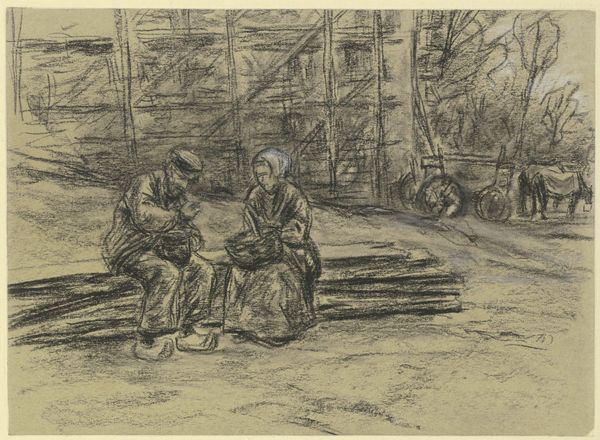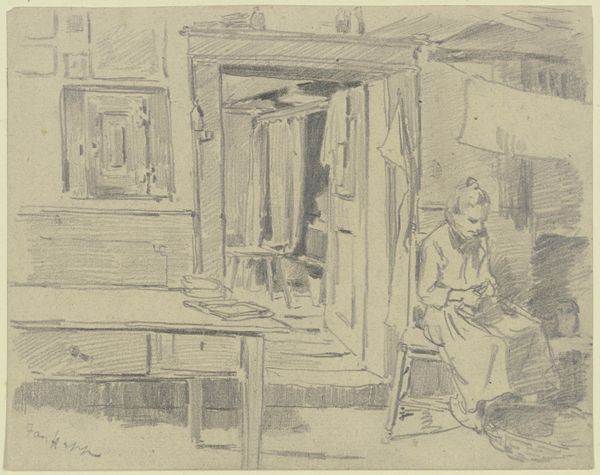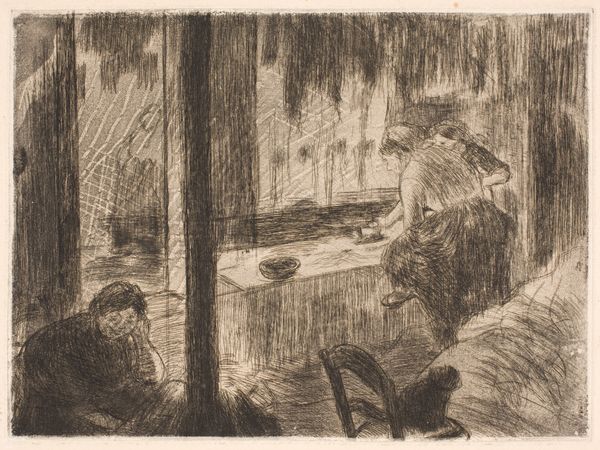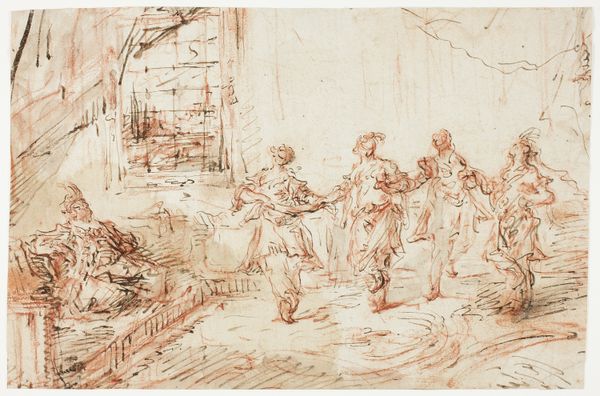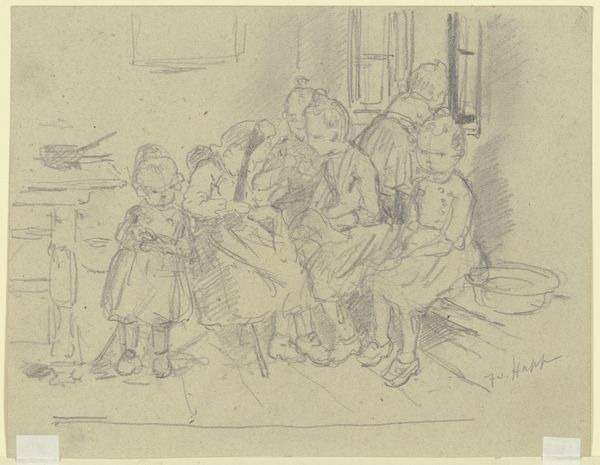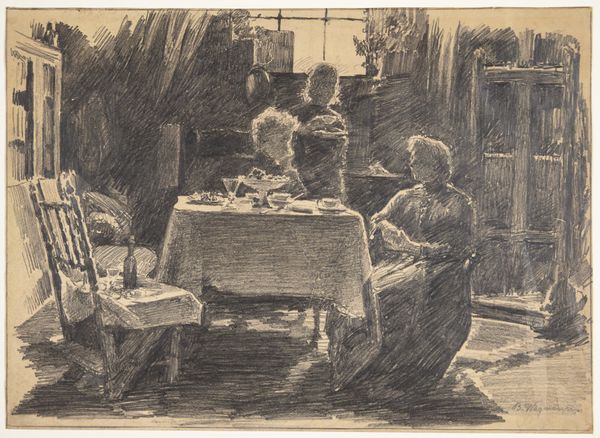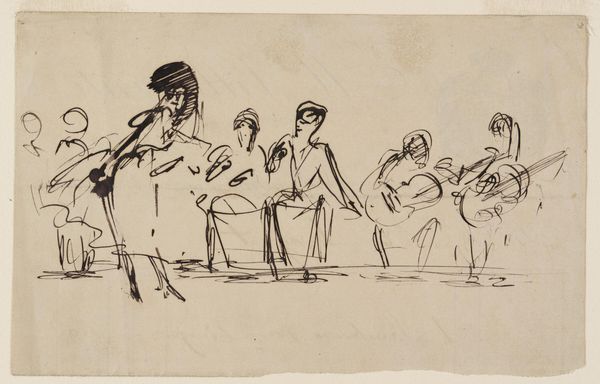
Copyright: Public Domain
Curator: Liebermann’s drawing, "Sechs nähende holländische Mädchen vor einer Hauswand," created around 1887, captures a somber yet intimate scene of Dutch girls sewing. He employed charcoal and chalk to compose the piece. What is your first impression of this drawing? Editor: A gentle hum of labor and perhaps a little bit of loneliness, all wrapped in a grayish light. I see their downcast faces bent to their sewing, a muted sort of devotion. I find myself wondering what they are thinking about and what stories might hide within these young women's collective moment. Curator: Absolutely. In late 19th century Netherlands, labor was heavily gendered and determined social mobility and status, so these girls may all come from working class or poor families. Liebermann offers an honest, humanistic view into their everyday struggles and labor, and in his broader artistic context, moved towards representing everyday experiences within the realism movement. Editor: It is very moving and thought-provoking. They could be mending sails or nets for fishermen or sewing for an export industry of some sort. Whatever their reality, you know their stories are essential, their lives a rich contribution to Dutch culture and its endurance over time. The grayness adds to the weight of those lives. Curator: Consider that within this artistic representation there might be subtle but implicit critiques. Liebermann often engaged with social and political themes in his art. The scene subtly pushes us to ponder the societal conditions impacting these women’s lives. It prompts viewers to reflect on gender and the social structures in late 19th century Netherlands. Editor: You make such a strong argument, particularly thinking about it through the lens of intersectionality and these girls as figures with minimal socio-political power in a culture dominated by males and strict codes of class and social hierarchy. To me, there's something beautiful here in its simplicity. I love how the almost monochrome color scheme really intensifies the scene's mood, capturing both the beauty and monotony of this world. Curator: Agreed. This piece captures social contexts of late 19th century working women with starkness and subtlety. Editor: For me, it shows how art gives us access to glimpses of beauty within ordinary human experience. I'll leave considering these stories of labor with great appreciation and thought.
Comments
No comments
Be the first to comment and join the conversation on the ultimate creative platform.


